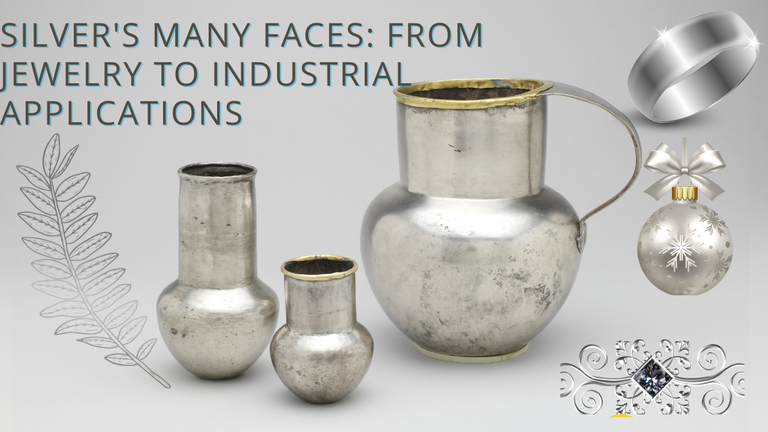Silver's Many Faces: From Jewelry to Industrial Applications
Silver, an exquisite metal, has been valued for its beauty, rarity, and versatility for thousands of years. Its shining white hue, exceptional electrical conductivity, and capacity to reflect light make it an integral part of modern society.

The Timeless Value of Silver: Beauty, Rarity, and Versatility
The precious worth of silver is evident in its fluctuating market price, which is influenced by changes in demand and supply, as well as political and economic instability.
Despite these changes, silver remains one of the most treasured and coveted metals globally, with many people investing in it as a protection against inflation and currency fluctuations.
The demand for silver is driven by various reasons, such as its use in jewelry, industrial purposes, and investment portfolios. Its beauty, rarity, and versatility make silver a precious metal that will continue to be cherished for generations to come.
Silver has a diverse range of uses, from jewelry to industrial applications. Its bright white color and reflective properties make it an ideal material for use in jewelry, from bracelets to earrings and necklaces. Silver is also popular in coinage and other forms of currency due to its durability and resistance to tarnish.
Investing: In addition to its usage in jewelry and industry, silver also proves to be a popular investment choice for many individuals. Its worth and rarity make it an attractive investment opportunity to protect against inflation and currency fluctuations. Some opt to invest in physical silver, such as coins or bars, while others choose silver-based ETFs or futures contracts for their portfolios.
Coin Currency: Silver has a rich history in coin currency, dating back to ancient times. Throughout history, silver coins were utilized as a medium of exchange and a store of value. Currently, many nations still mint silver coins that are favored by collectors and investors.
The Importance of Silver in Electronics
Electronics: Silver's remarkable electrical conductivity and reflective properties make it a crucial element in today's electronics. It is employed in the manufacture of different electrical components, including wiring, connectors, and switches. The widespread use of silver in electronics has raised its demand, making it a valuable and in-demand commodity.
In industrial settings, silver is essential for its high electrical conductivity and reflective properties, used in electrical components like wiring, connectors, and switches. It is also used in mirrors and photographic film as it is highly reflective and sensitive to light.
Additionally, silver is used in catalytic converters to reduce harmful emissions from vehicles, as silver catalysts convert toxic pollutants into less dangerous substances.
Silver has a long history in medicine, where silver-based compounds serve as antimicrobial agents with the ability to kill a wide range of bacteria, viruses, and fungi.
It is also utilized in wound dressings, promoting healing and reducing the risk of infection. Additionally, silver is used in the production of solar cells, which convert light into electrical energy. Its high electrical conductivity increases the efficiency and performance of solar cells.
In conclusion, silver is a versatile and valuable precious metal with a plethora of uses. From its role in jewelry to industrial applications, silver has proven to be a vital part of modern society. Whether creating stunning jewelry or reducing harmful emissions, silver will remain one of the most sought-after and valuable metals in the world.
Picture edited in Canva.
Thank you!
Posted Using LeoFinance Beta
Congratulations, @kosar21 Your Post Got 100% Boost.
@aliakbar2 Burnt 77.199 HELIOS & We Followed That Lead.
Contact Us : HELIOS Token Discord Channel
I believe silver will be affordable someday. This is sad for people just getting into silver collecting, but very happy for those who have been collecting for years!